Media | Articles
According to you: Your favorite name for an engine
The comments quoted in this article have been edited lightly for clarity and house style. —Ed.
Turns out there are lot of great engine names out there! You, a member of the Hagerty Community, helped fill my list with engine names that stood the test of time. Or at least been memorable enough to never forget. And some were just nicknames that caught on! No matter the name’s popularity or where it came from, here is your list of favorite engine names!
Blue Flame
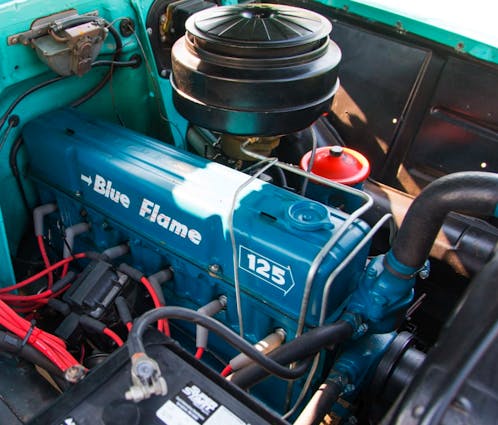
You just gotta keep the flame for Chevy’s famous inline six cylinder engine. It powered so many vehicles, ranging from the work-ready to the weekend fun generated by the original Corvette. It’s almost a shame we only got two upvotes for it!
- Peter: The “Blue Flame Six” baby!!
- DUB6: Yeah, I always thought Blue Flame Six was a catchy name for an engine.
HEMI
I was a little surprised to see that only one person (@JBD) mentioned Chrysler’s famous Hemi V-8. Or maybe this comes as no surprise, as the name is so common that the Hagerty Community wanted to dig up other names that we might have forgotten?
AMC Torque Command & Typhoon

Be it the V-8 or the straight-6, AMC’s Typhoon name was so catchy and so perfect for the era. There was even a special edition AMC Rambler called the Typhoon in 1964, but the name lived on in their engines.
Marketplace
Buy and sell classics with confidence
- Gregory: AMC’s “Typhoon” is my favorite.
- Adam: 343 Typhoon by American Motors.
Mopar Grab Bag
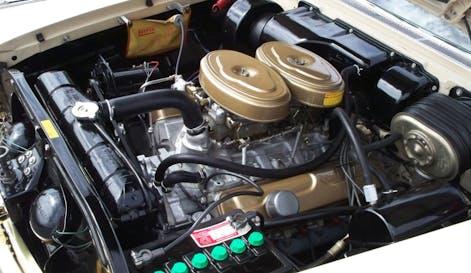
Thanks to Commando, Super Commando, Magnum, Wedge motors, and likely many more, the Chrysler brands likely had the coolest engine names of any manufacturer. Be it Chrysler, Dodge, Plymouth, and DeSoto, there are so many names to love:
- Safetyguy: My ’63 Plymouth says “Golden Commando POWER” on the fender badge but has a 318 poly head, the “Semi Hemi” small big-block.
- Tom: Super Commando is another one I remember from high school days.
- JBD: Magnum, Super Commando.
- Grant: Sonoramic Commando Power.
- Stephen: Plymouth “Golden Commando Power” and Dodge “Super Red Ram” are two of my favorites.
- TA: Super Commando, Magnum.
- Clare: Dodge’s baby hemi, the “Red Ram.” A fantastic little engine at 241 cubes (basically 4.0 liter), but what a HEAVY SLUG. Just about pulled the chicken barn down pulling the engine and trans out of my ’53 Coronet!!
- Paul: Chryslers Golden Lion 361 four-barrel.
- WLB: The Chrysler Firepower and DeSoto Firedome Hemis.
Buick: Nailhead and Wildcat

While giving catchy names to engines in more premium luxury cars wasn’t commonplace, Buick had the Nailhead and the later Wildcat V-8s.
- Robert: Nailhead by Buick!
- DUB6: Not sure if Nailhead was actually a name that Buick coined, but it sure is descriptive enough if one knows what it means (most of the general public doesn’t, I think).
- KJ: I’m still ol’ school: 6 – 2s on a 425 Nailhead!
- Mark: Nobody mentioned the Buick Wildcat engines? (Sad but true, luckily you resolved that! – Ed.)
Iron Duke

The famous Iron Duke was as tough as the name suggested, if tragically short on power and refinement for many automotive applications where it saw frequent use. Luckily I am not the only person who loves this little motor and its fantastic name.
- DUB6: Iron Duke sticks in my mind as memorable.
- Mark: My favorite name is Iron Duke.
Willys Tornado & Go Devil

Did the Willy’s Go Devil (L134) engine win World War II for the good guys? Not singlehandedly, but it was a big part of getting people in the right place at the right time. But it wasn’t the only name from Willys:
- Dean: Go Devil Willys L134.
- JohnfromSC: Tornado by Willys.
- Reggie: The Jeep Willys “Go Devil.” That’s quite a name; I would drive that into war.
- Ren: Willys “Go Devil” flathead four used in WWII jeeps and early CJs.
Ford: Interceptor, Boss, Cobra Jet, Super Cobra Jet
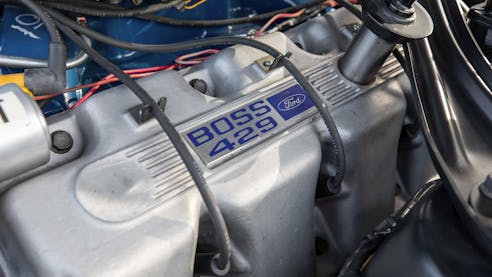
The Blue Oval folks weren’t short of catchy engine names in the 1950s and ’60s, especially for their big block V-8 engines:
- Mark: You’ve got include the BOSS engines by Ford. They encompassed the slang of the day and they’re still respected almost 50 years later.
- Gayle: Ford Interceptor.
- Mark: Fords 428 Cobra Jet, Super Cobra Jet, and Police Interceptor!
Gray Marine Fireball

Not to be outdone by their land based counterparts, marine applications had memorable names too. Gray Marine did the boating world a solid with its name for the AMC-derived V-8 that powered many boats during the muscle car era.
- Mark: Gray Marine Fireball V-8. I have one in my Century Resorter wood boat. It is modified for marine use, based on a 1950s 250-cu-in AMC engine. Reliable and rugged.
Air Cooled says it all?
American manufacturers dominate the landscape of “cool names for engines,” but that’s not to say that other manufacturers haven’t earned a catchy phrase or two for their creations.
- Ray: Simple, descriptive, succinct, reliable, and immediately identifiable: “Air-cooled Flat-Six.” And for us older guys, a name across two brands: “Air-cooled Flat-Four.”
Oldsmobile: Jetfire, Rocket & Ramrod

Not to be outdone by competition from Pontiac and Chevrolet, Oldsmobile had memorable engine names that were absolutely worthy of their Rocket-themed designs of the mid-century era.
- BigRig12: My car’s engine has the best name, 455 Rocket!
- Jim: I always liked “ROCKET 88.”
- Tom: Easily the Oldsmobile Jetfire with Turbo-Rocket V-8 engine snorting Turbo-Rocket Fluid, as water methanol injection. Had the fluid tank been three times the size, or the compression been 7–8, it might have hung around a little longer.
- Ed: My buddy had a big Oldsmobile (late ’60s, I think) and on the air cleaner it said, “Oldsmobile 425 Ultra High Compression Super Rocket.”
- Mood-O: How about the “Ramrod” 350?
The Leaning Tower of Power & Hyper-Pak

Chrysler’s Slant 6 has a well-deserved reputation for durability, affordability, and being easy to work on. That said, the Slant 6 wasn’t just a workhorse, it could be tweaked and tuned for a big more fun.
- World24: I like the “Leaning Tower of Power” because that sounds a bit cooler to me.
- Gary: How about the 1960–61 Plymouth “Hyper Pak” high-performance slant-six engine?
Flathead, Panhead, Knucklehead, & Shovelhead
While being accurate, the “valve in block engine” is a rather boring description of this type of engine design. Flathead accomplishes the same description, but from a different vantage point. And there’s another “heady” description for engines of the Harley Davidson variety too!
- TGJ: How about the Knucklehead, Panhead, and Shovelhead?
- OldFordMan: Of course, FLATHEAD V-8!
Chevrolet: Mystery Motor, Turbo-Jet, Ram Jet

There was something about Chevrolet engine names of the era, as they felt more functional and less emotional, less dramatic as your average Mopar, Pontiac, or Buick name.
- Jack: ’57–65 “Ramjet” Fuel Injected SB chevys.
- Dynoking: Turbo Jet, big block Mystery Motor.
High Output

The comment below triggered memories of the 1980s for me, hence the photo above. Ford made a big deal about the increasing levels of power its engines were getting as it put the Malaise Era in the rear view, be it from 5.0 Mustangs or 1.9-liter Escorts. General Motors did it too, with everything from the famous small block Chevy to Oldsmobile’s Quad 4. So thanks to @Erik for both reminding me of the ’80s, and teaching me about the 455 HO from Pontiac!
- Erik: I would add (HO) High Output for the 455 HO to the mix from 1971 and ’72. It had the Ram Air IV top end. Quite a nice motor with loads of torque and able to make 13-second time slips out of a low compression motor.
Dauntless V-6

Buick’s Fireball V-6 has a story no other engine could tell, and part of it includes its connection to Kaiser-Willys:
- Dean: When Kaiser-Willys bought the Buick V-6 tooling, it called the new engine the Dauntless V-6. When the oil crisis hit, GM took a Dauntless and put it in a Nova (or Buick Apollo) and determined that it would really help bring the gas mileage CAFE up. They bought the tooling back, and the rest is history.
Ford Vulcan
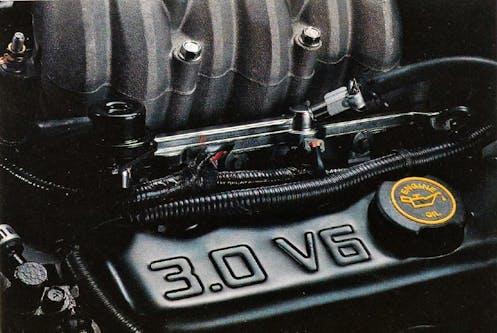
Is it possible that the most memorable engine name in Ford’s lineup is for a motor that powered the original Taurus? Believe it or not, we didn’t get a lot of love for the Coyote V-8 in our initial question, but we got one hit for this cast iron workhorse:
- Chuck: “Vulcan” by Ford.
RPO codes

Codes aren’t a name, are they? Sure, but consider how revered certain RPO codes are in the classic car market. Maybe the three codes below will change your mind, because they instantly conjure up images of unmatched performance and exclusivity:
- Jack: Chevy’s legendary RPO codes. ZL1, L88, and LS6.
Induction-Specific Names
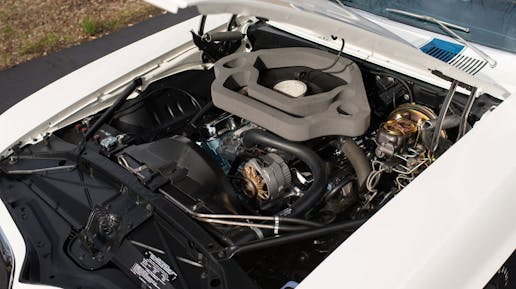
Feeding air into an engine can be fantastic inspiration for a catchy engine name. The act of doing the deed better than others can be distilled into a word or three, right? That said, is it possible to come up with an exhaust-centric name for an engine?
- Vern: Pontiac Tri-power! Three deuces and a four-speed, and a 389! 😀 It’s all about my little GTO. 😉
- jim: Pontiac Ram Air IV, and the Formula 400 (I’ve got one of those).
- Peter: “Three deuces” still turns my crank in my ’65 GTO.
- TA: Six Pack, Ram Air.
- Jon: You all missed the most classic of classic names … the one and only, Spider Turbo-Charged Corvair!
Pontiac Trophy & Sprint 6

While we have sprinkled Pontiac references above, it’s about time they got the same “stand alone” treatment given to Chevrolet, Oldsmobile, and Buick.
- Reggie: Pontiac’s inline-six, named “OHC 6 Sprint”
- Gayle: Pontiac “Trophy V-8”
Napier Deltic

An engine that complicated deserves a unique name, don’t cha think? The triple crankshaft equipped Napier Deltic likely didn’t stand the test of time for many reasons, but the power it must have put out in its heyday woulda been spectacular to behold in person.
- Slow Joe Crow: Napier Deltic, almost as incomprehensible as the engine itself with 18 cylinders and three crankshafts.
EcoBoost (R.I.P. Twin Force)
Our very own @DUB6 probably gave us the best comment, even though he may not know the whole truth behind the name. In his words:
“I’m not sure I can isolate a favorite, but I think I know my LEAST favorite: EcoBoost!”
Agreed! But did you know that EcoBoost wasn’t the original name for the first of this engine family? It was Twin Force, making its debut in the 2007 Lincoln MKR concept car. Between that moment and the production of the 3.5-liter, twin-turbocharged V-6 came a name change to the a more Eco-friendly, greenwashed name. While greenwashing is an issue (i.e. turbo boost is not terribly fuel efficient), the name easily transferred to four-cylinder Fords with a single turbocharger: Can’t make that happen with Twin Force.

But still, if I wanted to help the environment, I’d be taking mass transit. You can’t have your cake and eat it too, so perhaps Devries Designs did a better job than Ford? Because when you have a turbo with boost optimized by a computer, why not make an Eco-BEAST instead?
***
Check out the Hagerty Media homepage so you don’t miss a single story, or better yet, bookmark it. To get our best stories delivered right to your inbox, subscribe to our newsletters.


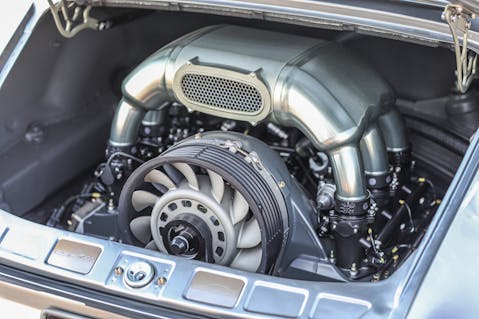

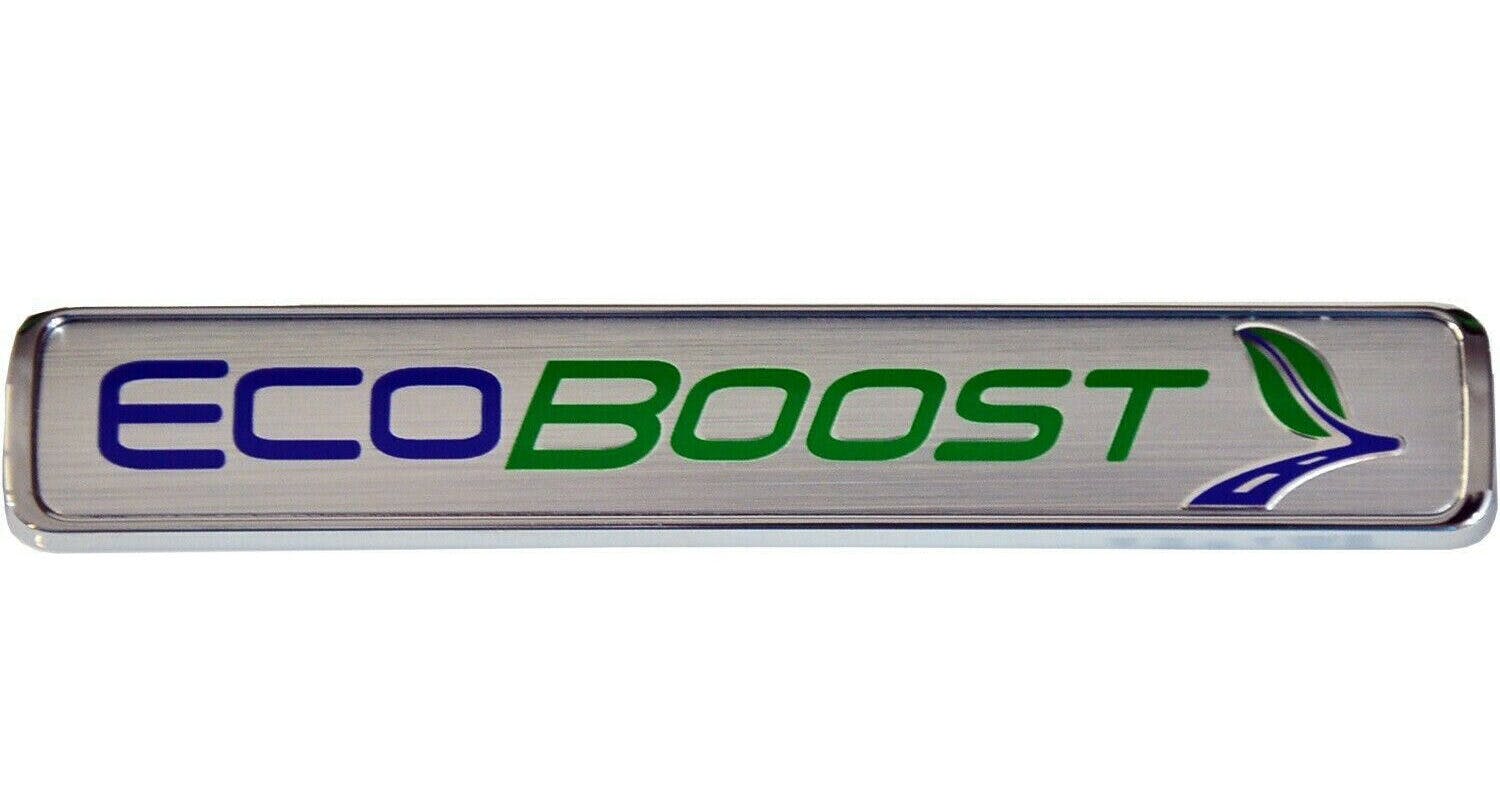














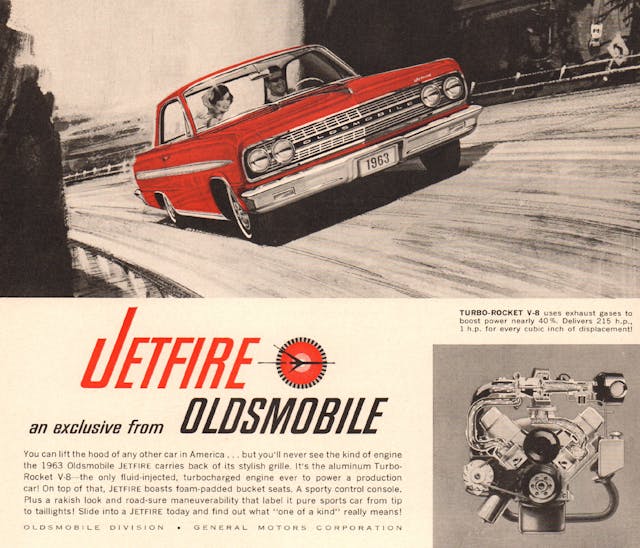




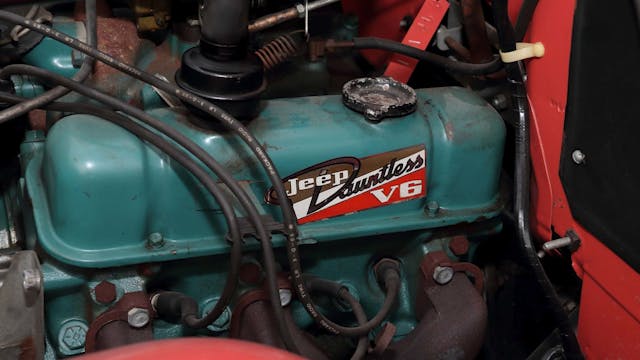

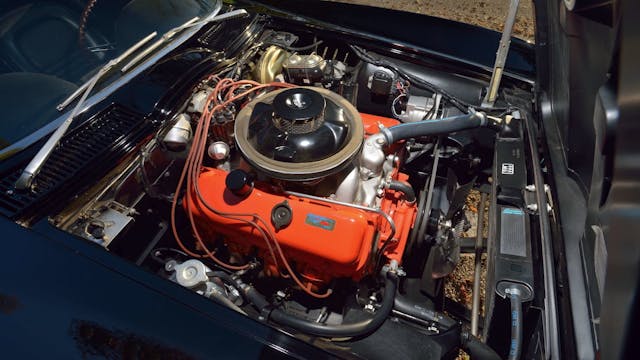





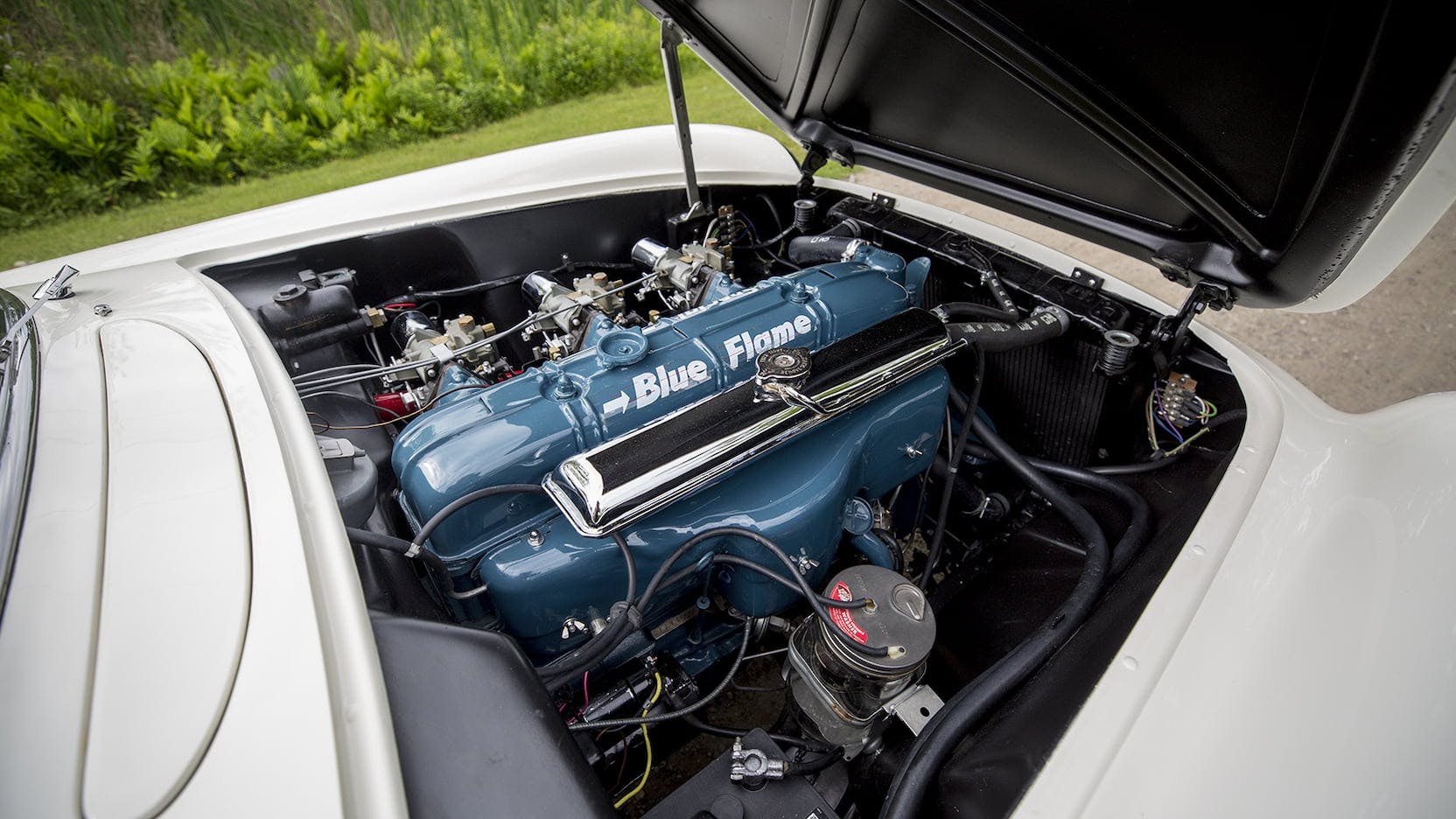
What about the Packard “Thunderbolt”.
When I think “Tower of Power”, I think classic Mercury outboards, but either way a great name.
That is the comment I was going to make, tower of power is an amazing name, and Mercury outboard owned it with their epic stacked straight-six. It truly was a tower!
Absolutely
I’m thinking the “Atomic 4” used in many boats
Packard “THUNDERBOLT”
Another foreign engine not to be forgotten is the Rolls Royce “Merlin” . That 16 cylinder 2000 hp beast in the Spitfires and other WW fighter planes played a huge role in saving the Allies.
The ability for a caburetted engine to fly upside down was a wonder in itself.
The upside-downability was thanks to everyone’s favourite carburetter part, “Miss Tilly’s Orifice.” There was an actual Miss Tilly (Beatrice Shilling OBE), and she was a peach of a human being. There ought to be a medal through which one might pray for her intercession in stoichiometric matters.
Another foreign engine not to be forgotten is the Rolls Royce “Merlin” . That 16 cylinder 2000 hp beast in the Spitfires and other WW fighter planes played a huge role in saving the Allies.
The ability for a carburetted engine to fly upside down was a wonder in itself.
I got a 1 hour flight in dual control Crazy Horse years back. Included aerobatics and ground attack runs at a military range. Something I’ll never forget.
Another foreign engine not to be forgotten is the Rolls Royce “Merlin” . That 16 cylinder 2000 hp beast in the Spitfires and other WW fighter planes played a huge role in saving the Allies.
The ability for a carbureted engine to fly upside down was a wonder in itself.
Great engine, but it was a V12 (not 16). Also produced by Packard in huge numbers under license from RR.
Good point !
Forgot that important footnote.
Sadly missing is the VW TDI. Having driven diesel vehicles in work and machines since the 70’s their fuel sipping property’s were always desired especially for my commuting needs! The non turbo engines needed to be pushed before inclines just to maintain a decent speed at the to of a hill! With the advent of the TDI the speed and performance were constant and on demand!
Drove my Dad’s ’80 diesel Rabbit from Virginia to Texas–had to shut off a/c top get over mountains in Tennessee.
What about the 426 cu. in. MAX WEDGE? 420 HP with 500 ft.lbs. of torque!
6.2 liter “Hellcat” has to be on the list as well.
Not even a word just numbers 409
“She’s real fine, my 409”
porcupine heads on the Chevy 409-427
I read recently that the “409” was actually 427 c.i. If true, that means that adding the porcupine (Mark IV) heads gives you the basic 427 “Rat” motor. My understanding is that all of this began with the 348, which was originally designed as a truck engine.
As I recall, the mid 60’s Pontiac police engines were called ‘enforcers’
Ford’s “MEL”. Mercury, Edsel, Lincoln engine of the late ‘50’s and 60’s. 383, 410, 430 and 462 ci. Also called the Marauder V8. Good hp but crazy amount of torque. My 66 Lincoln convertible has the 462 (340hp/485 lb-ft.
Where is the Zephyr ?
My aunt had the I think first year Iron Duke in a Chevy II. POS it was. It shook so hard at idle you would think it would fall out of the engine bay. But what would you expect from a four cylinder built with a V8 crankshaft?